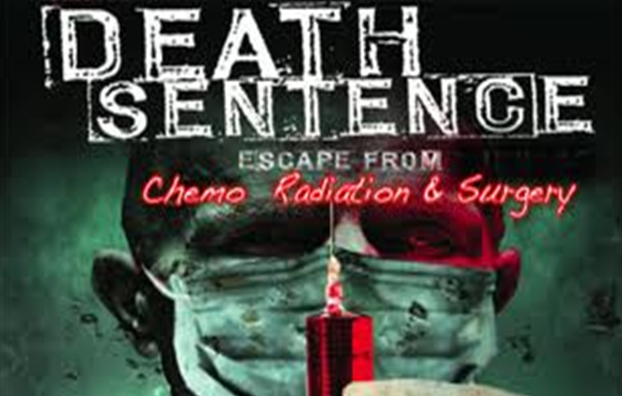Chemotherapy and the Immune System
( )
)
By Craig Stellpflug NDC, CNC
Healing Pathways Medical Clinic Scottsdale, AZ
The words “side effects” are like “doublespeak” straight out of the book 1984 by George Orwell. There are no such things as “side effects”. They are all effects; some desirable, some not desirable. When a drug has “side effects”, this is merely saying “these are the effects we don’t like”. When considering a drug for cancer chemotherapy, the “side effects” can be horrible. The “desired effect” of cancer remission comes, unfortunately, at a great expense of suffering, loss of quality of life, and even death. After all the nasty effects of chemotherapy there is only a mere 2.1% survivability from cancer averages. According to Pub Med, the overall contribution of curative and adjuvant cytotoxic chemotherapy to 5-year survival in adults was estimated to be 2.3% in Australia and 2.1% in the USA.
Each year more than 1 million cancer patients receive outpatient chemotherapy, radiation therapy, or both.
Unfortunately, most cancer patients in the USA die from chemotherapy. For over a decade doctors have known that chemotherapy does not eliminate breast, colon or lung cancers. “Most cancer patients in this country die of chemotherapy... Chemotherapy does not eliminate breast, colon or lung cancers. This fact has been documented for over a decade. Yet doctors still use chemotherapy for these tumors... Women with breast cancer are likely to die faster with chemo than without it.” - Alan Levin, M.D.
In like fashion, Dr. Ulrich Abel contacted 350 medical centers asking them to send him anything they had ever published on chemotherapy. It took Dr. Abel many years to collect and evaluate the data as he also reviewed and analyzed thousands of scientific articles published in medical journals. Dr. Abel’s epidemiological study was published on August 10, 1991 in The Lancet and should have alerted every doctor and cancer patient about the risks of one of the most common treatments used for cancer. Dr. Abel concluded that the overall success rate of chemotherapy was “appalling.”
Yet doctors still use chemotherapy for these types of tumors. In fact, women with breast cancer are likely to die faster with chemo than without it.
- Each person with cancer reacts differently to chemotherapy and its various effects. Your body’s reaction to chemotherapy depends on factors such as treatment length, drug and dosage prescribed, and health history.
Chemotherapy is notorious for lowering levels of infection-fighting white blood cells and causing a condition known as neutropenia. This happens when neutrophils, the most abundant of the types of white blood cells, are destroyed along with cancer cells and even other healthy cells. Neutrophils contain tiny packets filled with potent enzymes that can destroy bacteria when these enzymes are released.
- Bacteria are then the most common source of infection for patients receiving chemotherapy because when your white cells are low, a very small infection can quickly escalate into a serious health threat.
One of the most common side effects of chemotherapy is myelosuppression (decreased production of blood cells, hence also immunosuppression).
- In very severe myelosuppression, which occurs in some regimens of chempotherapy, almost all the bone marrow stem cells (cells that produce white and red blood cells) are destroyed, making bone marrow cell transplants necessary.
Most chemotherapeutic drugs are cytotoxic and work by impairing mitosis (cell division), and targeting fast-dividing cells. Chemotherapy tends to lower the number of white blood cells because it also destroys any cells in your body that grow quickly. This destruction may include cancer cells, but it also targets the rapidly growing healthy cells in your hair, digestive system, and bone marrow (where blood cells are produced). Unfortunately, in older tumors and near the center of some solid tumors, cell division has effectively ceased, making them insensitive to chemotherapy. Another problem with solid tumors is the fact that the chemotherapeutic agent often does not reach the core of the tumor.
Although patients are encouraged to wash their hands, avoid sick people, and to take other infection-reducing steps, about 85% of infections are due to naturally occurring microorganisms in the patient's own gastrointestinal tract, oral cavity and skin.
Taking all forms of cancer together, people who receive chemotherapy increase their odds of living five years after diagnosis by about two percentage points.
There are alternatives to chemotherapy that work and work very well. If you have been put in the position to have to consider chemotherapy, or if you have tried chemotherapy that failed to put your cancer in remission, you will want to contact us at our medical clinic in Scottsdale; Healing Pathways Medical Clinic, 480-688-7135.
Craig Stellpflug is a Neuro Development Consultant and Certified Nutritional Consultant and Cancer Health and Nutrition Coach at Healing Pathways Medical Clinic in Scottsdale, AZ For more information, call 480-688-7135 or visit HealingPathwaysMedical.com.
1 http://www.ncbi.nlm.nih.gov/pubmed/15630849
2 Halpern MT, Yabroff KR. Prevalence of outpatient cancer treatment in the United States: estimates from the medical panel expenditures survey (MEPS). Cancer Invest. 2008;26:647-651.
3 http://www.cancertruth.net/death-treaments-to-avoid/
4 http://scienceblogs.com/insolence/2011/09/two_percent_gambit_chemot...
5http://www.americanchinesemedicineassociation.org/Most%20Cancer%20P...
6 a href="http://www.cancercare.org/publications/24-understanding_and_managing_chemotherapy_side_effects?gclid=CLWCt8nUp6wCFYhdTAodnwo0AQ%3E">http://www.cancercare.org/publications/24-understanding_and_managin...;
7 a href="http://en.wikipedia.org/wiki/Chemotherapy%3E">http://en.wikipedia.org/wiki/Chemotherapy>;
Source
http://realhealthtalk.com/chemotherapy.html